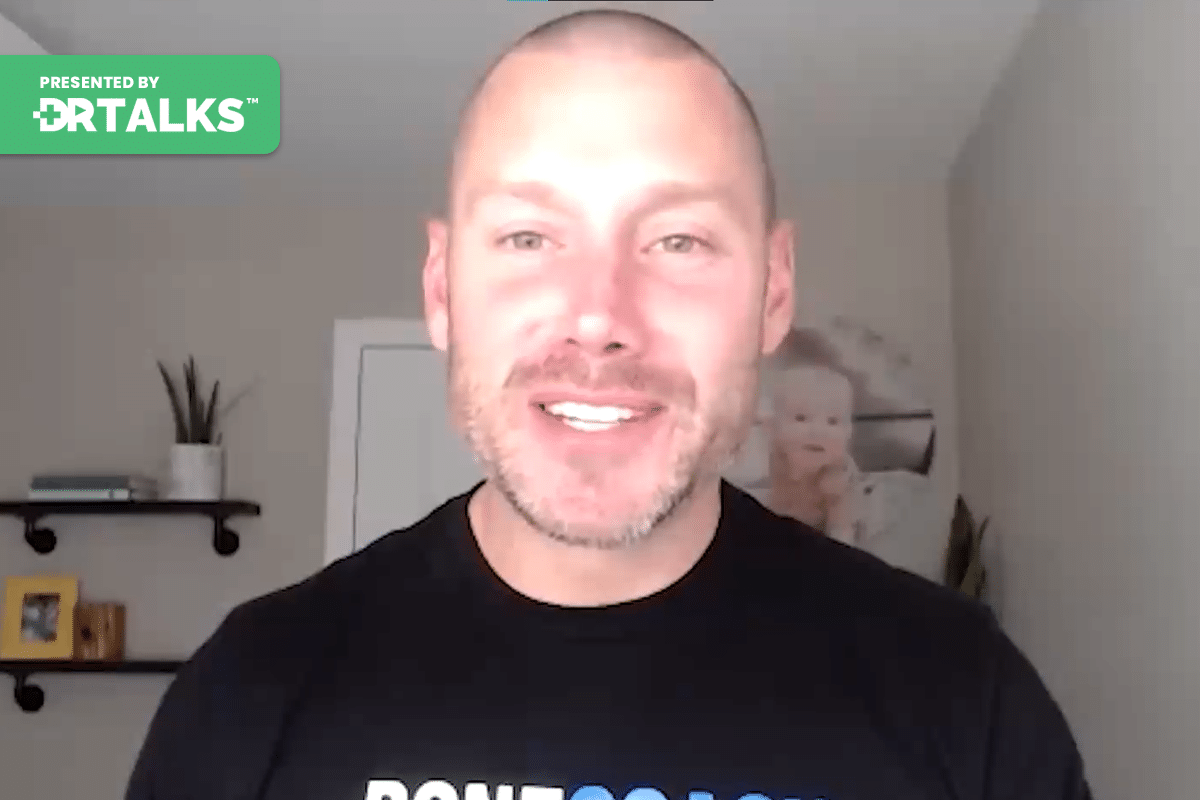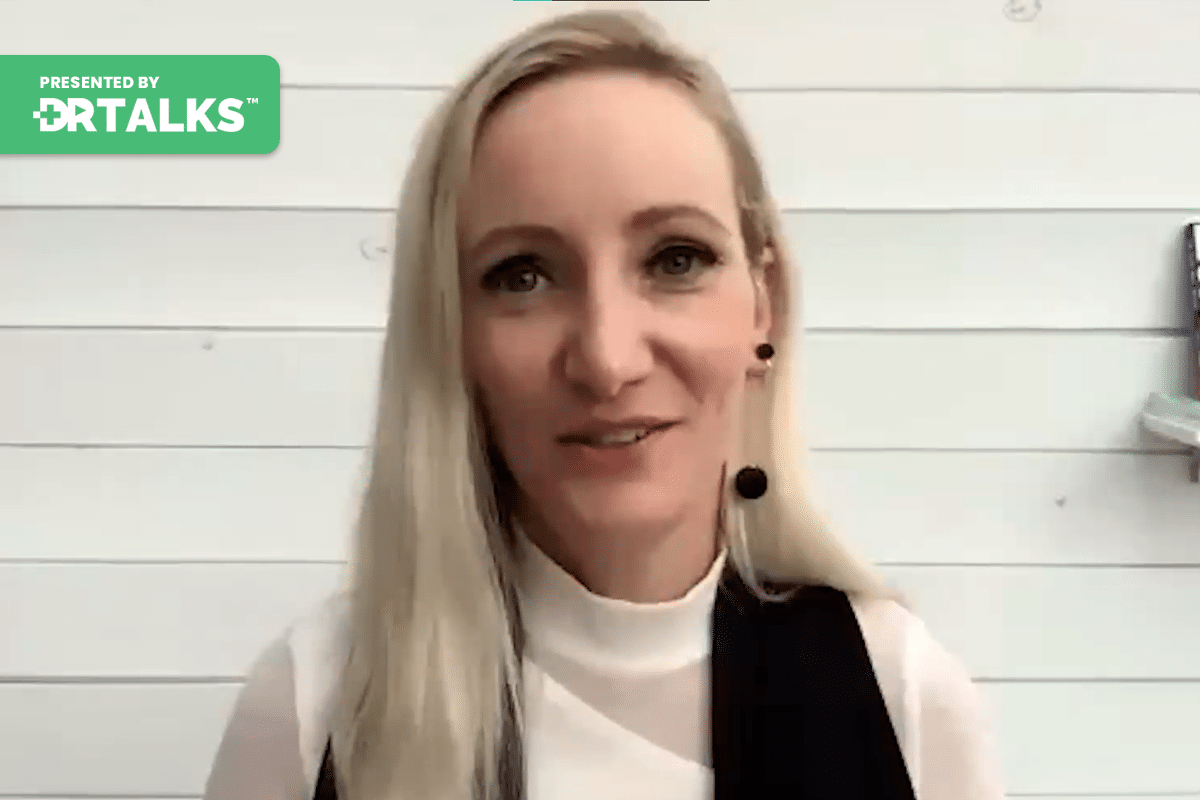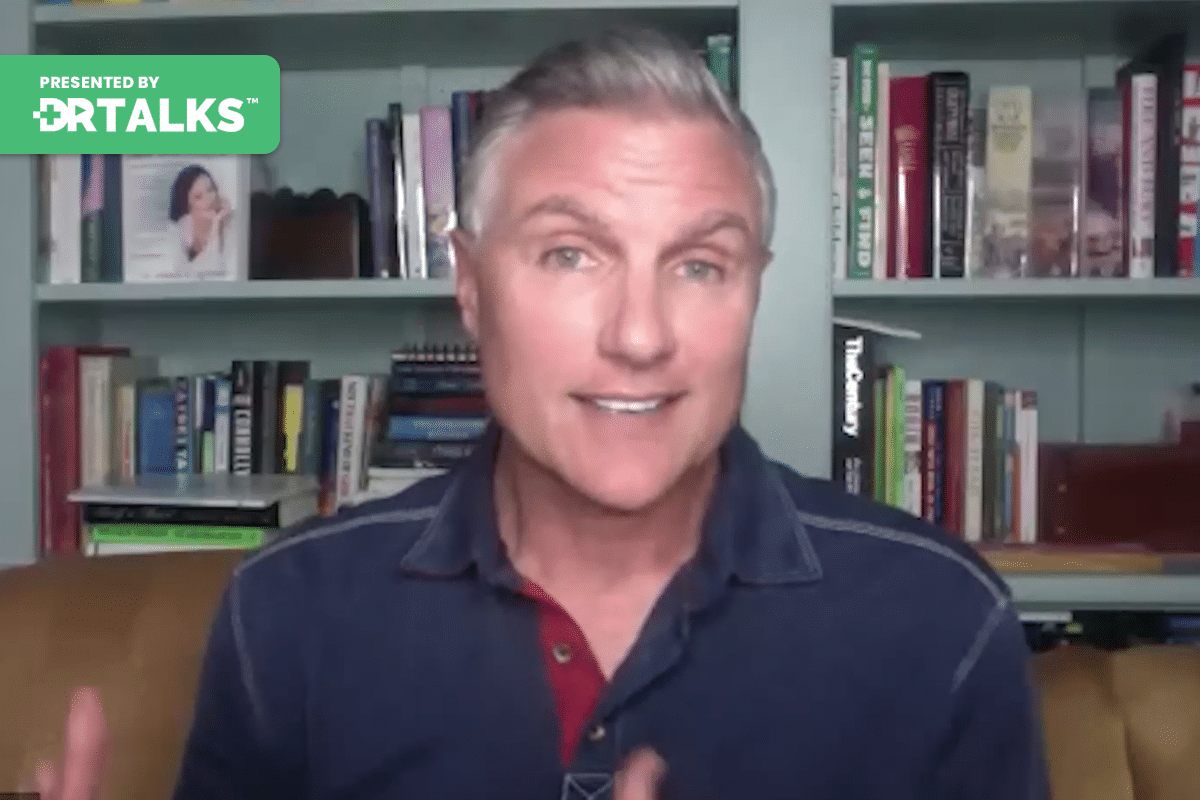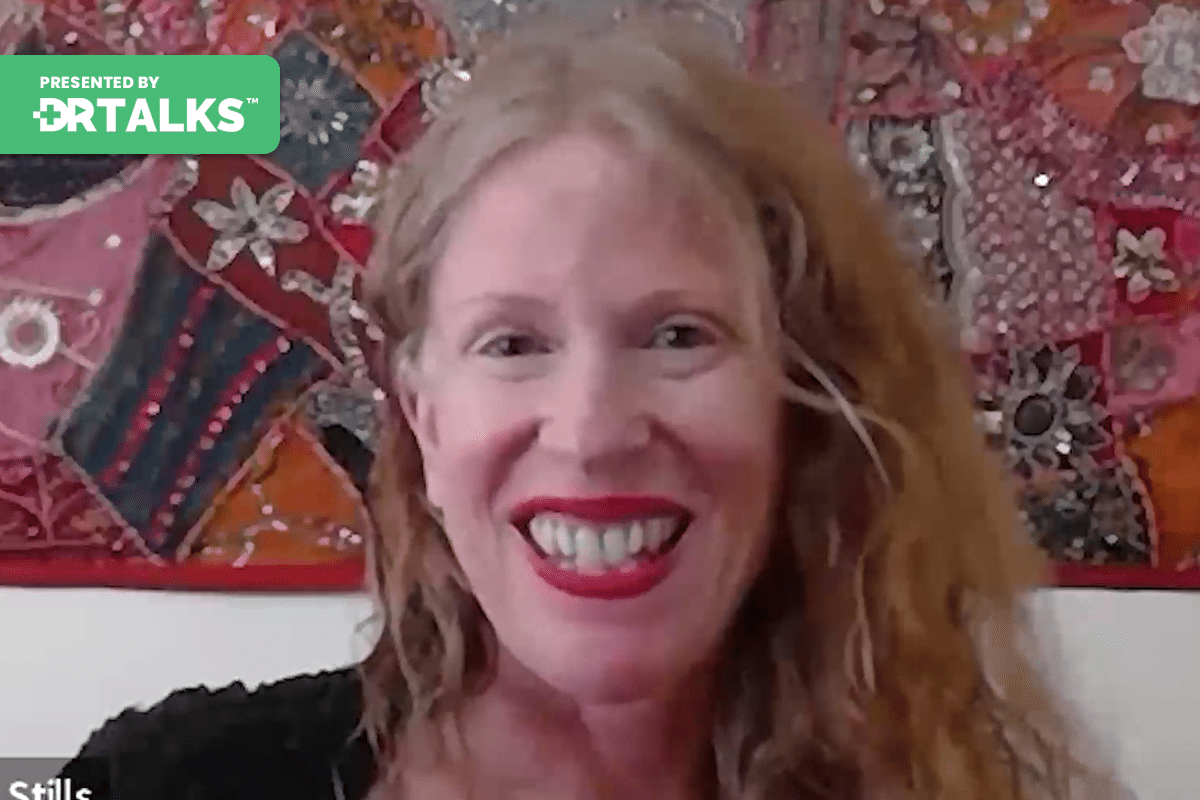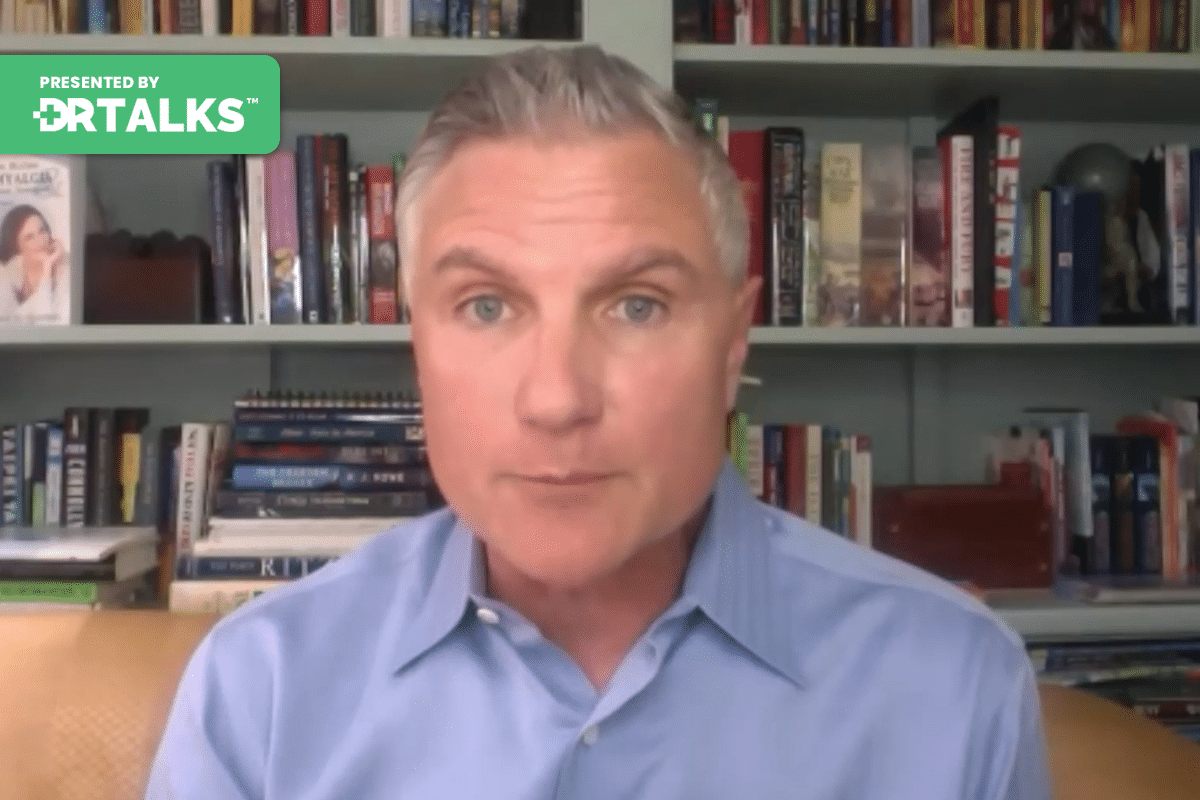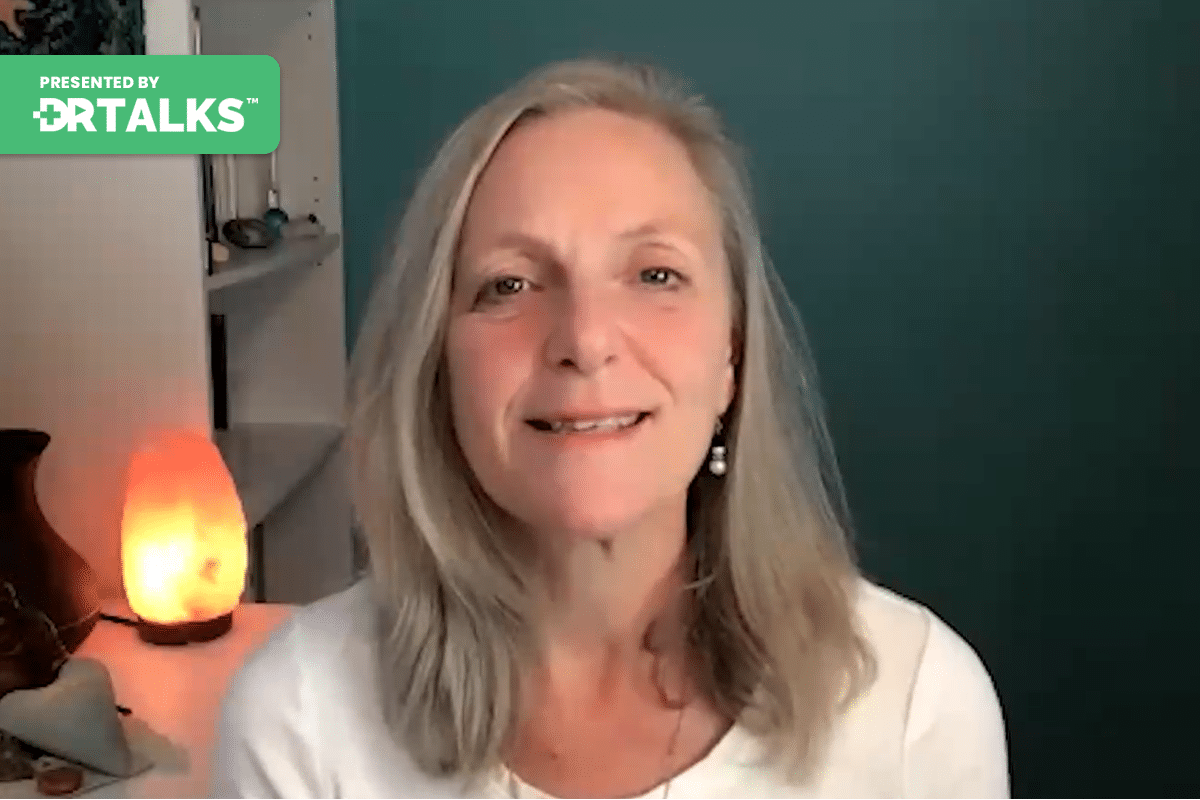Join the discussion below

Dr. Rodger Murphree is a chiropractic physician and board certified nutritional specialist. He is an internationally recognized fibromyalgia expert. His “Murphree Method,” a combination of functional and orthomolecular medicine, has helped thousands of patients get healthy and feel good again. He’s the author of 3 books for patients and doctors including... Read More
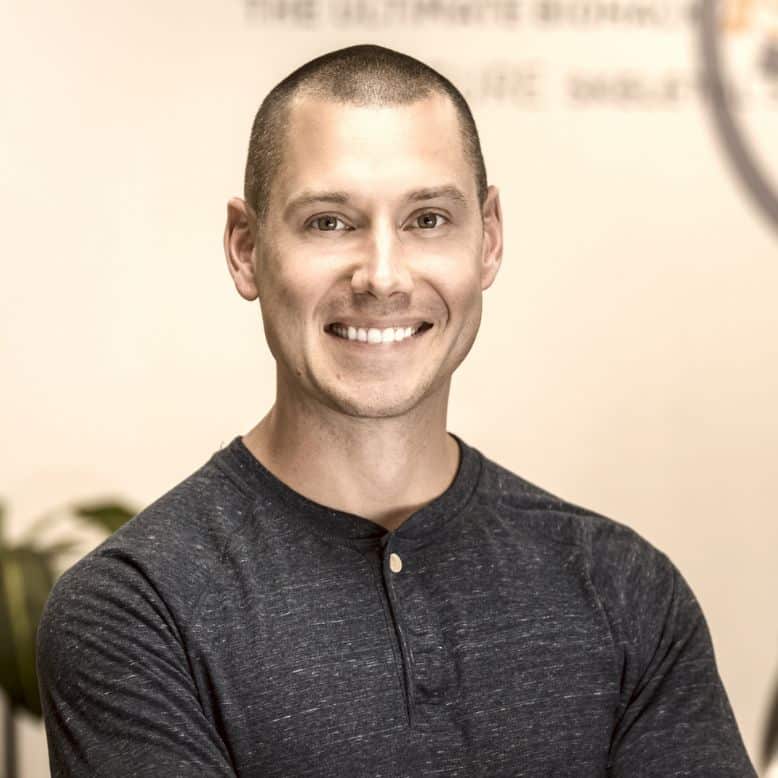
Kevin Ellis, better known as Bone Coach™, is a certified Integrative Nutrition health coach, podcaster, YouTuber, bone health advocate, and the founder of BoneCoach.com. After an osteoporosis diagnosis in his early 30s, he realized just how challenging it can be for the average person to make sense of what needs... Read More
- Why should someone with fibromyalgia care about their bone health?
- What is osteopenia and osteoporosis and how would you know if you have one or the other?
- Healthy tips for building healthy bone
Related Topics
Astronauts And Bone Loss, Autoimmune Disease, Bone Density Scan, Bone Health, Bones, Boron, Calcium, Celiac Disease, Chronic Illness, Community, Cycling, Dexa Scan, Fibromyalgia, Fractures, Gluten, Health Coaching, Impact Exercises, Inflammation, K2, Kayaking, Low Bone Mass, Medication Dependence, Muscle Strengthening, Non-weight Bearing Exercise, Nutrient Absorption, Osteopenia, Osteoporosis, Pain Threshold, Pilates, Pool Therapy, Qigong, Resistance Training, Swimming, Tai Chi, Vitamin D3, Weight-bearing Exercise, Weight-bearing Exercises, YogaRodger Murphree, DC, CNS
Hi. Welcome to the Freedom from Fibromyalgia Summit. I’m Dr. Roger Murphy. I’m your host. And I have Kellan Ellis here. He’s the bone coach. Everything you want to know about osteoporosis, osteopenia, you’re going to learn about it today. This is going to be an in-depth interview about the connection between bone loss and fibromyalgia. Kevin has got quite the resume here just a little bit about it. But again, he’s known as the Bone Coach. He’s a Forbes featured integrative health coach, podcaster YouTuber and the founder of Bone Coach Rt.com through a unique three step process and a world class coaching program called The Stronger Bone Solution. He and his team have helped thousands of people around the world. He’s worked with over worked in over 1500 cities. So and growing is what I understand. So really excited to have you here. Kevin, thanks so much for being part of the summit.
Kevin Ellis
Dr. Rodger This is great to be here and this is such an important topic. I’m happy to help out and share what I know well.
Rodger Murphree, DC, CNS
So what is the connection between fibromyalgia and bone loss, this whole thing called osteoporosis? Most people don’t realize that one in three people, one in three women worldwide and one in 12 men worldwide have osteoporosis. It’s a weakening condition, but there’s a connection to this bone weakening condition. And fibromyalgia right.
Kevin Ellis
There? Absolutely is. And I think one of the biggest connections comes from the need for us to provide a stimulus for our bones to become stronger. And we’ll talk more in-depth about this a little bit later. But I think one of the biggest connections to fibromyalgia is sometimes people might be a little less active when they’re experiencing pain. That pain may prohibit them from doing certain movements or moving in a certain way. And we have to have that stimulus to help those bones maintain their density and their strength. And sometimes that’s just not happening. So that’s one of the biggest connections that I see in people that have osteoporosis, that also have fibromyalgia, too.
Rodger Murphree, DC, CNS
So weight bearing exercise is probably the best way to build bone. I mean, people hear about calcium and boron and K2 and vitamin D3 and all those are important are really probably the most important thing is just weight bearing exercise. And you’re and you’re so correct when you have fibromyalgia, oftentimes you have become fairly sanitary, just out of necessity. Trying to avoid fibro flares is this aggravation of your symptoms. So this is a condition that I see quite frequently and frequently in my practice, but it’s one that’s oftentimes hidden. It goes unnoticed.
Kevin Ellis
Yeah, absolutely. And I would say to especially as it relates to exercise, you have to have multiple types of stimulus for that bond. The weight bearing exercise is so important because that’s where your body in your bones, weight bearing exercise for your body and your bones are working against gravity to keep you up. Right? So there are things you’re doing on your feet and that’s placing a good kind of healthy stress on your bones. But then there’s another kind of exercise that you have to incorporate.
Also, you have to incorporate resistance training and muscle strengthening exercise. You’ve got to do those two things because your bones need a couple different types of stimuli to maintain their strength and to become stronger. You have to have muscle pulling on bone, which is going to send a mechanical signal, is going to send a chemical signal to tell those bones to become stronger. And then you also need to have impact. And the most effective interventions are going to use one or both of those things in combination. So most people, when they’re told they have osteoporosis or they’re told, hey, you’ve got weak bones or brittle bones, you know, go for a walk, that’s like the standard recommendation.
And if you’re walking, great, continue to walk. It’s great for your health. Get outside, get some steps in, but realize it’s not going to be enough. You have to incorporate the other kind of stuff. So our weight bearing exercises would be like, you’re walking, you’re running your jogging, your gardening, playing with the kids or the grandkids outside. All that can be considered weight bearing. What’s also weight bearing would be Pilates or yoga or Tai chi or qigong. Those kinds of things are also weight bearing, but then there’s also non weight bearing exercise. And a lot of people with fibromyalgia may be doing some of these non weight bearing exercises, including swimming.
Rodger Murphree, DC, CNS
Pool therapy is a big thing.
Kevin Ellis
Yeah, exactly. Right. So with that, it’s when you’re non weight bearing like you are with swimming and cycling and kayaking and those kinds of things, you’re not placing that good kind of healthy stress on the bones. Okay. So it’s the same thing that astronauts work against in space when why they have bone loss when they go up in a space is because there’s not they’re not working against gravity. They don’t have that stimulus on their bones. So if swimming is a part of your plan, it’s great to incorporate that, especially if it makes you happy. It reduces your stress, makes you feel good. That’s all good. But just know you have to incorporate the next part, which is the muscle strengthening exercise too. And that’s where you add in maybe some resistance bands or maybe there’s some machines at the gym, or maybe it’s with dumbbells or barbells or something like that. And you work with somebody to slowly help you progress up to where you can do some of these exercises that are going to be good for your bones.
Rodger Murphree, DC, CNS
Well, I got to hear you speak at a conference. We were both out here recently, and I really enjoyed your presentation and your story. It’s very inspiring, very touching, very moving. Can you share a little bit about how you became the bone coach? I mean, you know, it’s an interesting name, right? The Bone coach that you took on this challenge that, you know, we don’t really hear a lot of people talking about bone health like like we need to. So tell us a little bit about your background.
Kevin Ellis
Yeah, I’m happy to. And because most of the time it’s not the young male. Right, talking about osteoporosis. And for me, like many people in the health space, it started out with my own personal health journey. And I would say my health journey started out when I was much, much younger, when my mother was five months pregnant with me, my father was told he had cancer. He was a marine in Vietnam. He did 22 months in Vietnam. And then you end up getting cancer from Agent Orange. And he passed away when I was about two months old. And I had this fear as I was growing up that I was going to follow down the path to an early grave, not be there for my kids, not experience the joys of being a father. And after I left the Marine Corps a little bit later in life, I started having all these different health issues. And I had high stress, poor sleep, low energy. I could barely get out of bed. Some days I had chronic digestive issues. I really thought I was at the end, I really did. And then I was diagnosed with celiac disease and I was it’s an autoimmune condition where you ingest gluten or proteins that mimic gluten and they damaged villi in the small intestine, these tiny little nutrient absorption centers. And what they do is they damage them to the point where they become blunted and they can’t do their job. And for me, my villi were damaged and they weren’t able to absorb nutrients and my body still needed these nutrients to execute its daily functions.
So it went to the largest reserve of minerals I had to pull from, which are my bones. And that is when I was subsequently diagnosed with osteoporosis, right around 30 years old. And it was when I got the it was a letter in the mail. It wasn’t even a call. It was a letter in the mail. And it was like, hey, you have osteoporosis, go on a gluten free diet. And that was the extent of it. And I remember just looking up what is osteoporosis? And I was like, okay, fractures and medication, dependance, that is my future. And I was scared. I was worried. I was overwhelmed.
And I was like, I can’t do this. I can’t go down the path that my father did and not be there for my kids. So I had a really strong, strong impetus for making some changes and doing the research and making improvements. And I eventually said, you know what? I can take the same energy and enthusiasm I had in the Marine Corps and apply it to helping people with osteoporosis. So I became a health coach and I built on a team of credentialed experts. And we grew our community to over 100,000 people. And thousands of people have come through these programs to help build stronger bones and to take back control of their futures.
Rodger Murphree, DC, CNS
Yeah. So we’re fibromyalgia. Always talk about it’s a low pain threshold condition. It’s a syndrome that is associated with Allegheny, a low pain threshold. And because of that, all my strategies for the last 22 years, specializing in fibromyalgia, have been to raise that pain threshold, because if you can raise the pain threshold, no matter where that pain is coming from, you can dampen that pain. But one of the pain driving triggers for these folks is osteoporosis.
And oftentimes they don’t even know that they have it. They I’ll be doing a consult with him and he’ll be talking about going to get in a DEXA scan or maybe I encourage them to go get a scan because I’m suspicious that we’re missing something that comes back. And sure enough, it shows that they have a positive score, that they get diagnosed with osteoporosis. That’s an underlying trigger for some of the inflammation, some of the pain that these folks are having that I’m realizing.
Kevin Ellis
Yeah, absolutely. And and you mentioned and really important test and which is the bone density scan which that is the thing that determines if a person has osteoPenia or what we would call low bone mass or osteoporosis. So the bone density scan where that starts out is if you haven’t gotten one, you probably you’ll want to go get one after we’re talking about this. But it’s a it’s you lay down on the machine. The machine does a scan very low levels of radiation, and then that machine generates a score. And that score is called the T score. And the T score is going to tell you how much your bone mass differs from the bone mass of a healthy approximately 30 year old adult. And if you’ve got a score of plus or minus one that’s considered normal and healthy, if you’re -1 to -2.5, that would be considered osteopenia, which is what we would call low bone mass. And that’s like a precursor to osteoporosis, CIS.
And then osteoporosis is -2.5 or lower, so -2.6, -2.7, so on and so forth. The greater that negative number becomes, the more severe the the osteoporosis is. Now, if you haven’t had a bone density scan yet, go get one. Understand where you’re at. Don’t just say, oh, I don’t want to know. I don’t want to know that because I don’t have to address this thing to. Yeah, that probably this is not one of those conditions you would want to do that with. But just know that when you get those results back, it’s not the whole picture. It’s not everything that’s going on, especially if you only have one bone density scan.
There are some other things you don’t know at that point in time. Most of the time, because your bone density scan tells you the mineral content of your bone, how much bone you have, the bone quality tells you the structural integrity, the microarchitecture, how that bone is organized. Those two things combine to create bone strength. So oftentimes you only have the bone density part of that picture. So you could have good quality or not so good quality. And that’s going to help. That’s going to also determine, you know, the likelihood of a fracture.
And the other thing that you’re probably not going to understand at the time of diagnosis is, am I still actively losing bone right now, a single bone density scan will not tell you if you are still losing bone right now. So there are some tests you can look at. There are things called bone turnover markers and these are tests that look at the activity level of cells that are breaking down and building up your bones. And there’s one called the serum cortex or a low peptide test, and that looks at the activity level of cells that are breaking down bone. And if that activity level is elevated or even really high, that can be an indicator of active bone loss and a root cause issue that needs to be addressed. You know, Dr. Rodger just mentioned also there could be other contributors to inflammation, too. And if that’s fueling and contributing to that bone loss, we have to figure out what are the underlying contributors of that.
Rodger Murphree, DC, CNS
Yeah, so you mentioned a couple, that is Kevin. You mentioned center livestock number one, and then your own challenge with the celiac. So absorption issues and in the fibromyalgia community, like a lot of people who have a chronic illness, one of the things that we see across the board kind of a thread that kind of weaves through chronic illness is this whole thing called leaky gut and and in some GI dysfunction where they’re not able to absorb their nutrients. And this is very common. Maybe you’re taking Prilosec or Nexium or something that you totally got too much stomach acid. You’re taking an acid blocker, but that’s is a preventative.
If you’re taking that, it prevents you from absorbing and utilizing calcium. You could have a problem with gluten or celiac. It’s never been diagnosed or you can have a sensitivity to it. Every time you eat, you flare up and that prevents you from absorbing these nutrients. There’s all kinds of things that can cause osteoporosis. What are some of the other things that you see in your practice that kind of start to initiate this whole, whole thing called osteoporosis? It associates lifestyle and then nutrition issues, deficiencies. But there’s some other things as well, right?
Kevin Ellis
Absolutely. And we could even go back to when we were kids. We could even start there because 90% of your bone mass is put on by the time you turn age 18, by the time you turn 30, approximately the remaining 10% is going to fill in there. So if when you were younger, even two, we’ll get to present day. But if when you were younger you had poor diet, nutrition, you didn’t get enough calcium and vitamin D and magnesium and K2 and all those other things. When you were younger, you drank a lot of sugary soft drinks and sodas and pops and colas. You ate a bunch of candy, you know, those kinds of things. You didn’t get proper nutrition. That could be a contributor if you let us into your lifestyle.
When you were younger, you weren’t working out or being active or playing sports or doing gymnastics, those kinds of things that’s going to help support your bones at a young age. If you weren’t doing those things, it could prevent you from reaching peak bone mass if you took certain medications. Glucocorticoids Those are a medication that we’ll talk about in just a minute. If you had an eating disorder, if you smoked or drank excessively, if you led a sedentary lifestyle, all of those things could have prevented you from achieving peak bone mass or what I call a full bucket before you even turned 30 years of age. So it’s great to know and understand that that could have been part of your picture. But now we need to focus on present day and where we’re currently at and what are the things that could be contributing right now. So I just mentioned medications. One of those medications is glucocorticoids and these are steroid medications that are designed to suppress inflammation. They mimic these natural steroid hormones in your body. And they’re used to treat conditions like asthma, rheumatoid arthritis, autoimmune conditions and prednisone, cortisone. Those are some of the names of these. They will contribute to bone loss. And the reason for that is kind of threefold number one, they reduce your GI absorption of calcium. Number two, they increase your urinary excretion of calcium. So that leads to a calcium deficit in your bones.
The primary mineral constituent is calcium. And then this is the biggest one, those glucocorticoids, they act directly on the cells that break down bone to increase their lifespan and that’s going to reduce your bone density. So just know if you are taking them or have taken them or considering it. Bone loss will happen when you take those medications. And then, Dr. Rodger, you mentioned one that is such a big one that I see, too, which are PBIS. These are these drugs, if they should even ever be used at all are used they’re only should be used for a very short period of time, weeks, if even at all again. But I see people on them for ten, 20, 30 years, lifetime, lifetime. Right. You get on them and it just becomes something you stick with. The reason that’s a problem is for exactly what you just said.
A lot of times people take them because they mistakenly think they have too much stomach acid when in reality they have too little stomach acid. And then you need stomach acid to properly break down and extract those nutrients from your food, your calcium, your magnesium, your iron or B12, the amino acids that are the building blocks of everything. You need to be able to break those down from protein and absorb those and reuse them in your body. And you’re going to have a really hard time if you don’t have adequate stomach acid. So that’s a big one. We touched on the digestive health issues, Crohn’s disease, ulcerative colitis, celiac disease. That’s such a big one. If you don’t know if you have celiac disease, you want to rule that one out.
Rodger Murphree, DC, CNS
Usually at some point you find that out, you know, after, after, after all the misery, you go through it, right? I mean, you finally get that diagnosis and can be a game changer, can you? But well, you mentioned sugar and you mentioned sodas. And I wrote an article years ago and I remember parts of that article were that teenage girls in particular, and that’s something between maybe it’s pre-teen and early teens. So ten and 14 or 15 year old adolescent girls, they were three times more likely to have a fracture if they were the average adolescent. Having six sodas a day is what it was. Some crazy number. Yeah. And that soda intake and the sugar causes an imbalance between the calcium and the phosphorus. And so calcium starts leaching out of the bone to buffer the bloodstream to buffer that, you know, the body. And then they start to have bone weakening at an early age. And you see these kids who play in soccer, one minute they’re running down the field. Next thing you see, they’ve got a broken leg that blew me away. And my kid will probably only have three kids, don’t ever drink sodas in the house. But that was, you know, an impetus for us making sure that our kids didn’t get hooked on sodas.
Kevin Ellis
Yeah, so and so for us, we we don’t even we don’t even have that in the house. We’re like, we don’t even deal with that. But I am so glad we’re talking about this. I’m big on prevention too. Like, what can we learn now, not just for ourselves, but that we can be the shepherd for the younger generations, our kids and grandkids? Right. And it is so important for young kids as they’re developing their skeletons to not be consuming all of this sugar. Sugar damages bone by triggering an inflammatory response. It reduces vitamin D levels. It depletes your bone, healthy minerals or calcium, your chromium, your copper, those kinds of things.
And one of the biggest ones is that it blocks the absorption of vitamin C and vitamin C is key for developing and maintaining a healthy skeleton. And a lot of people don’t know this, but your bones, the underlying structure of them, they’re it’s a collagen protein structure. And you need to have vitamin C to help support this structure because vitamin C stimulates pro collagen, it enhances collagen synthesis, and it stimulates something called alkaline phosphatase activity, which is a marker for bone building cell formation. Yeah. So if you’re consuming a lot of sugar and blocking the absorption of vitamin C, that’s a problem, right? So that’s a big problem.
And when we’re talking about sugar, we’re not just talking about drinking a bunch of soda, like that’s an obvious one. But what are the not so obvious ones? That would be your white breads and your cakes and your crackers and your pizzas and your passes and stuff. And I know sometimes when people hear that, they’re like, Gosh, I don’t know if I can get rid of that. I don’t know if I can do that. But think about it this way. What can you add in? What can you swap? What? How can we focus on abundance versus avoidance? What can we add that could maybe crowd out those things that we’re focused on right now that we just have to have that?
Rodger Murphree, DC, CNS
If I remember right, there’s 18 different nutrients that are needed to make this bone building process happen correctly, and those 18 nutrients can be found in green leafy vegetables. I mean, it’s probably one of the best things you can do is to add these green leafy vegetables into your diet. That’s one way to start building them. Right, right there.
Kevin Ellis
Yeah. And I love some of my favorite leafy greens. I would say arugula is one of my absolute favorite leafy greens. I don’t know if you like that one. It’s such an.
Rodger Murphree, DC, CNS
Easy we have arugula salad almost every night of week. And if it starts to go bad, I throw it in a stir fry or put it in something, you know, and lot times disguise it so my kids know what they’re eating, you know? But that regular is a big fat. I’m a big fan of arugula as well.
Kevin Ellis
It’s a good one because it’s so easy. You can use it. And the reason I like it is it’s got count. It’s got bioavailable calcium in it. It’s got vitamin K, it’s got vitamin C. And it also contains a compound called Irisin, which helps turn off the act. It’s a bioactive compound, helps turn off the activity level of the cells and break down bone. That’s good. And then it also is a bitter to bitter food. Our diets today are largely devoid of bitter foods. And we need bitters to stimulate bile, which helps our digestion, helps you absorb your fat soluble nutrients, like your vitamins A, your D, your E, your K. So you want to have these bitter foods in your diet and these dark leafy greens, like a ruthless rule, would be a great one to add to help support that, too. Well, this.
Rodger Murphree, DC, CNS
Is this is kind of sorry I interrupted you. Sure. Go ahead, sir.
Kevin Ellis
I don’t know. There was actually one other note about arugula that I wanted to make, because I think this could be an important note for people that just have joint pain and other kinds of pain in different areas of their body is sometimes these people are consuming high oxalate foods, too. So spinach is a very high oxalate grain. And if somebody is having a lot of joint pain or kidney stones or a lot of digestive issues, those could be some indicators that you might have a hard time breaking down and degrading that oxalate. So in those situations, you could swap spinach for a regular. That could be a good one.
Rodger Murphree, DC, CNS
Yeah, I didn’t mean to interrupt you, but I’ve just thought about this is a very simple question. It’s kind of late in the interview, but what are some of the symptoms of them most?
Kevin Ellis
Yeah, I mean, it’s obviously pain.
Rodger Murphree, DC, CNS
Obviously pain at the site. But I mean.
Kevin Ellis
It’s a silent condition, right? It’s a silent condition. You’re not going to sit here and know for the most part that you’re still losing bone. The pain usually comes with a fracture, right? When somebody fractures. And that’s that may be the point that they’re that I come to they come to see me is like they’ve already had a fracture. And now they’re starting to figure out this process of, what do I do? What’s going on? Is bone loss still taking place? What do we have to do to address those things? And yeah, it’s a silent condition, though. So unless you go and get this objective information, one of the best places to start is with that bone the bone turnover markers and understand. Are you actively losing bone right now? Get the bone density scan. That’s going to be another good marker to understand that, too.
Rodger Murphree, DC, CNS
So one of the questions I get asked quite a bit, a lot of my patients are most of my patients are females, which makes sense of fibromyalgia, but and a number of them are on bioidentical hormone replacement therapy or synthetic hormone replacement therapy. And a lot of times the question is, you know, is this something I need to be honest, it’s going to benefit me. And that can be kind of a mixed question. I’m not a big fan of synthetic hormone replacement, but there is a time and a place for bioidentical hormone replacement therapy. Sometimes they’re prescribed these hormones because of osteoporosis. But there’s a lot of myths, misinformation about that whole process, right?
Kevin Ellis
Yeah. No, absolutely. So. And this is different for every single individual. So obviously, as you’re listening to this, consult your physician first, make sure that it’s the right thing for you to be doing or incorporating. Like if somebody has a risk for breast cancer or blood clotting or something like that, you really need to discuss with your physician because it might not be the right fit for you too. But overall, it could be a helpful part of somebody’s plan because know, especially if we think about priming pre osteoporosis that is typically related to a decrease in estrogen. In postmenopausal women, estrogen has a protective effect on bone as estrogen levels decrease as they do during menopause. That causes an increase in the activity level of cells that break down bone. So the years following menopause, a lot of women could have up to 20% of bone mass lost just in that five year window following menopause. So doing something a little bit more preventative estrogen can help with preventing bone loss. Progesterone, testosterone, DHEA. Those are also other important hormones that can help with building and maintaining your bone. So that’s where you want to go and work with somebody. Speak with them, figure out what’s the right plan for your body, understand where your hormone levels are at, and then have a plan kind of created from there.
Rodger Murphree, DC, CNS
Well, correct me if I’m wrong, but looking back at John Johnson rights work and John Lee Hooker, what your doctor would say about menopause, I’ve always thought, yeah, estrogen slows down bone loss, but progesterone actually builds bone nexii has a bone building building ability to it. Does it make sure I had that right. Let’s talk a little bit about some of the medications that are out there. So there’s medications and, you know, I’m not a fan of them. And, you know, my patients are on these medications and I help them get off of them when we’re working together. And the reason why is because those medications have potential side effects. And sometimes the side effects are very apparent in some of these individuals. They don’t realize it’s coming from this medication.
Kevin Ellis
Yeah. And when I talk about osteoporosis, I can tell you that just about every single person that goes into their conventional physician, that gets a diagnosis of osteopenia and osteoporosis, they will be presented with four things. Take some calcium, take some vitamin D, go for a walk. Here’s your bone drug. We’ll see you in a year or two for your next bone density scan. Yeah, that is not enough. Right. And a lot of times it may not be the right approach for that person. And when we’re talking about osteopenia versus medications, we have to understand these drugs have a dramatic effect on bone physiology. It’s not like taking an aspirin. So there are different categories of these drugs. There are anti resource device and anabolic anti resort device are designed to slow down the activity level of cells and break down bone. Okay.
So this would be your bisphosphonates and your rank ligand inhibitors, your bisphosphonates would be like Fosamax re last bone, even those kinds of medications, your rank like inhibitors would be like Prolia. So for bisphosphonates, the safety and efficacy of these drugs is not really well known beyond five years. And as you and I are going about our daily lives, doing our daily activities, moving around, doing chores around the house, exercising, we’re starting to get these tiny little micro cracks and micro damage in our bones. That’s normal for everybody. And then what happens is you have cells within the bone that sense that damage and they say, hey, we need to become stronger. And then they send out a signal to other cells in the bone. And those other cells are called osteo class. And they come in and they scoop out the damaged bone. And then right behind it, it’s a couple process. We have osteoblasts that come in and fill in stronger, healthier bone. You can slow down that process too much to where you start to accumulate. Old, worn, damaged, weakened bone over time. So if you’re taking a medication like this, sometimes what can happen is even if your bone density shows as higher on a bone density scan, the bone quality, the structural integrity may not actually be the bone might not actually be stronger.
So you have to be aware of that. And then for rank ligand inhibitors like Prolia, just know that when you go on that medication and it says if right on Prolia, the Prolia website too is if you come off of it, it can increase the risk of vertebral fractures. So that’s important to note from the anti preservative side And then there are a whole host of side effects and things like that that come with these two. And then on the other side are anabolic medications. And these are drugs that are designed to build bone, build better quality bone and build it faster.
Can they do that? Yes, they can. Are there risks and side effects with their use and important considerations? Absolutely. You can only use them for a certain period of time. And then this is the big one. After you’ve finished their use, you have to follow that drug with an anti preservative just to not lose the bone you just gained. So a lot of times you’re not just committing to one medication now you’re committing to maybe one medication over multiple years or maybe even multiple medications over a lifetime.
Rodger Murphree, DC, CNS
Yeah, well, I think we both can agree there’s a time and a place, and we certainly want to step by step and certainly not to scare anybody. No, ideally, I think we would. I think everyone watching this would agree that if we can do it in a more natural way and slow down that bone loss or build down, we certainly won’t want to do that. Weigh Fosamax and Bonita and Act two. Now you know, these medications can cause diffuse, achy bone pain. Yeah. And I’ve seen this time and time again 22 years working with fibro patients.
They’re on a medication and asked, and do you think it’s doing you any good. I don’t know help them weaned off of. And then they realize that one of their symptoms that they’ve been complaining with goes away. And that’s can happen sometimes. Any medication, anything that I don’t like about those medications is the risk of osteonecrosis, actually, bone, bone death. And not again, not to scare anybody. But those medications have been associated with the destruction of the jawbone here, where it literally just eats away that and esophagitis where it eats away the esophagus. And they’re associated with visual problems. So, again, not to scare anybody, but just we want to get you thinking about what are some of the things you could do that would help you to do it more naturally? And certainly the bone coach and his three step program is something you might want to think about, especially if you’re taking these medications looking for a more natural option.
Kevin Ellis
And I would add something else in there, too, which is I’m so glad you brought up like, look, there is a time and a place.
Rodger Murphree, DC, CNS
Yeah, absolutely.
Kevin Ellis
My approach to this is I am pro do everything you possibly can naturally first before ever considering medication as an option. But I have seen situations where medication, these bone medications are necessary and life saving. I have seen those situations. So yeah, there is a time and a place, but oftentimes there is so much more you can do first that hasn’t even been taken into consideration. And then also, regardless of whether someone takes the medication or not, you still have to do all these other things over here the diet, the lifestyle, the stress, sleep, the exercise, the nutrition, the gut, health, all of that. Regardless of whether this is here or not, the medications are not. You still have to do all those things. So it’s really important.
Rodger Murphree, DC, CNS
And sometimes it’s just little steps, right? It’s just a lot of steps. I think there’s some things that you take as this little bitty steps you can take and then that builds like a snowball. It just gets bigger and bigger as it goes down the mountain, you know, and then it can get quite, quite dangerous if you get in the way of it, because it’s got so much, so much energy, you know, don’t let it intimidate you. I mean, so those are your fibromyalgia. We both know that exercise is probably a bit of a challenge for you.
But even just standing and walking around your house, just weight bearing something, weight bearing, and then incorporating arugula or green leafy vegetables, putting those into your diet. I mean, these are a couple of things you do right away. Supplements. We’ve mentioned, you know, a handful of supplements that I think people should be on any way. D-3 is a big one. K2, more on magnesium, just a good multivitamin. Should take care of a lot of that, although I think, you know, probably 4000 5000 I use of vitamin D3 is something you’re probably not going to get in a multivitamin unless you’re taking something special. But yeah, what are some of your go to vitamins or supplements or nutrients that you really encourage your clients to be on when you start working with them?
Kevin Ellis
I mean, vitamin D is that’s the standard recommendation for vitamin D and calcium. Yeah. Yes, they are important, right? Like Vitamin D, it’s so important for not just your general health but also for your bones is helping to increase your GI absorption of calcium, your gut health and to absorb absorption of calcium. It’s going to reduce the urinary excretion of calcium is going to help support your bone health. So you want to incorporate vitamin D, but before you do start supplementing with vitamin D3, you want to get your levels tested first. You want to see where you’re at, right?
Rodger Murphree, DC, CNS
Yeah. Yep, yep.
Kevin Ellis
Just manageable. Yep. The 25 hydroxy vitamin D test. That’s the test. Your doctor is most likely going to bring it. But just confirm. And then once you know where your levels are at, that’s when you can figure out how much you’re taking in each day. Is it like a 2000 IU 3000 IU maintenance dose or is it winter time and the sun’s rays aren’t strong enough to generate enough vitamin D production and you’re not eating any fatty fish or anything like that. Then maybe you’re upping your vitamin D intake and supplementation to make sure you’re maintaining a bit of a higher level so vitamin D can be really helpful. K and K to those are also really helpful.
And your vitamin K one, this would be like the dark leafy greens that we were talking about, and this would be your kale, your broccoli or chard. Those kinds of things have a lot of K one in them. K one can be converted to k two, but it’s not an efficient process. So other sources of K two that you can get the k four version. I don’t want to get to too confusing here, but there are some different variations.
Rodger Murphree, DC, CNS
Yeah, I can get. Yeah. The overwhelming.
Kevin Ellis
Yeah but I’ll keep it high level so K to M.K. four you can find in things like beef, liver, grass fed ghee and butter, dark meat, chicken, pastured egg yolks. Those are sources of MK four and then M.K. seven. So K two, M.K. seven. This would be like hard cheeses if dairy is a part of your plan, a lot of times it’s not a part of people’s plan. So fermented foods, sauerkraut, kimchi, natto, that’s a big one for a lot of people. And bacterial fermentation in our guts, our gut can actually be a source of the production of nutrients. So it’s pretty amazing that sometimes we can actually be creating the nutrients that we need to support our health also. And then I mentioned vitamin C earlier, how important that it is for developing and maintaining a healthy skeleton. But it’s not just good for your bones. I mean, we all know it’s so good for so many other areas of our health and there are so many good whole food sources like these are easy things that you can incorporate that don’t require a lot of effort. So it could be like steaming some broccoli or, some brussel sprouts, or you get some dinero or loss on auto kale or something like that.
Those could be great, like vegetable additions. Also, peppers, those are great source. But a lot of times people have autoimmune conditions and they’re trying to avoid these things called nightshades. Peppers are nightshade, so if you’re if you’ve got an autoimmune condition and you can’t incorporate the peppers, go with some broccoli and some Brussels sprouts and things like that. And then also fruits, berries, berries are such a good source to incorporate. They’ve got the rich in antioxidants and vitamin C rich berries would be like your blueberries, strawberries, raspberries, blackberries. Those are all very accessible for most people.
And you can find them somewhere near you or at a farmer’s market, too, and then try to get your berries organic if it meets your budget, right? Because berries are known to get some pesticides and chemicals and things like that. So if we go organic, though, we’re going to avoid that altogether. But those are great sources of vitamin C. And then one of my other favorite foods that is a great to incorporate if you’re open to trying it. And I’m going to give you a tip on how to try it. So it actually is palatable, but sardines and Mac roll and I like the ones with the bones in them, maybe like in a little can you want to get a BPA free can? But the reason I like the bones in these sardines and mackerel is for a few reasons. Number one, the sardines and the mackerel, they have protein. And protein is what you need to build your muscles and to maintain your muscles and to build and maintain your bones. Okay.
So sardines and mackerel have that. They also have minerals and because they have the bones in them or that’s why you want to look for them, they have all the minerals that your own bones need in the right that nature put them in. So that’s the second reason. And the third reason why is omega threes. These fish contain omega three fatty acids and omega three fatty acids are like the dampeners of inflammation. So anything that contributes to inflammation, especially if it’s chronic, especially if it’s long term, that will contribute to and fuel your health issues and bone loss. So with one food, you kind of get a three pronged approach there. So I love that. And the way you could incorporate this is you can open up one of these things. I mean, you could make we’ve got recipes around this stuff that you can make like Saba, keto sardine cups that you just got to test it out and try it. Like there are good ways to make that taste good. You can make little patties or you could just pour on something like Primal Kitchen Dressing. If you’re familiar with that brand, that’s a good brand. That’s like healthy avocado oil dressings for a little bit on there. Give it a little bit of flavor and that’s going to make it so much better.
Rodger Murphree, DC, CNS
Great, great tips. Great tips, not too big. And so we found that I’m a big fish oil fan. I mean, fish oil supplements. And definitely I think that’s a big part of a healthy diet or healthy supplementation routine. One thing we I think you might mention, but I don’t think I’ve mentioned how just as we close magnesium out so people talk about calcium, calcium, calcium. But you’ve got to have that magnesium without that magnesium, you really the calcium really not going to do a whole lot. Those in the fibromyalgia community, you’re already familiar how important magnesium is.
You know that I’ve probably heard people say numerous times in these summits, I know you’ve probably heard me if you’ve heard me speak before, talk about the importance of magnesium. It’s in 300 different bodily processes. It’s a natural muscle relaxer. So relaxes those tight achy muscles and it relaxes those tight colons. If you’ve got abs, which about 70% of those are fibro do so magnesium is when we don’t want to leave out. I just want to throw that out there.
Kevin Ellis
You have to have magnesium. And another reason for that is in order to rebuild anything inside your body. So as you’re taking in those sardines or the mackerel or the protein or whatever it is you’re eating and you’re breaking that down into its smallest form into these amino acids, and then you’re absorbing those amino acids and they need to be rebuilt inside your body, into other things, into other tissues and your muscles in your bones. In order to rebuild anything, you have to have magnesium as part of that process. It is so, so important. And as your vitamin D and your calcium intake increases, so too does your need for magnesium. So it’s a really, really important part.
Rodger Murphree, DC, CNS
Of having this been great. I’ve learned a lot. You’ve shared some things that got me thinking, maybe make some changes in what I’m recommending. But they, they, I know everybody wants to know more about this and they need to go to bone coach dot com. Is that correct.
Kevin Ellis
Bonecoach.com. You can always find me there and that’s just we walk people through step by step how to formulate a stronger bones plan. And we’ve got easy recipes and, you know, easy step by step tips that can just start helping you get some small wins, too.
Rodger Murphree, DC, CNS
Kevin, thanks so much for being part of the seminar. I enjoyed this interview, thoroughly enjoyed it. Thank you so much. Great information and thanks for tuning in.
Downloads

